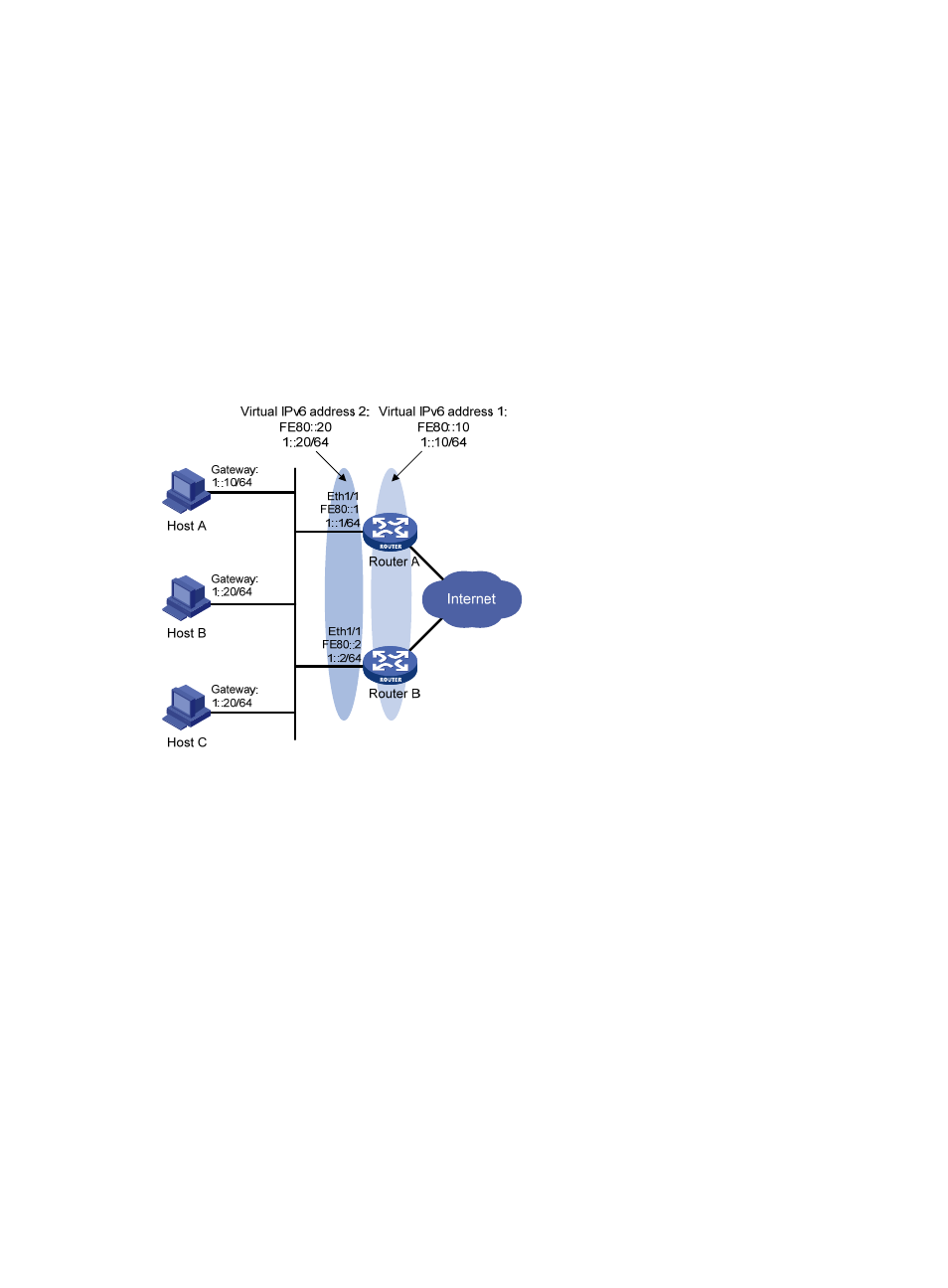Network requirements, Configuration procedure, Multiple vrrp groups configuration example – H3C Technologies H3C MSR 50 User Manual
Page 111

103
The output shows that when interface Ethernet 1/1 on Router A is not available, the priority of
Router A reduces to 80 and it becomes the backup. Router B becomes the master and packets sent
from Host A to Host B are forwarded by Router B.
Multiple VRRP groups configuration example
Network requirements
•
In the network, some hosts use 1::10/64 as their default gateway and some hosts use 1::20/64 as
their default gateway.
•
Load sharing and mutual backup between default gateways can be implemented by using VRRP
groups.
Figure 34 Network diagram
Configuration procedure
1.
Configure Router A:
[RouterA] ipv6
[RouterA] interface ethernet 1/1
[RouterA-Ethernet1/1] ipv6 address fe80::1 link-local
[RouterA-Ethernet1/1] ipv6 address 1::1 64
# Create VRRP group 1 and set its virtual IPv6 addresses to FE80::10 and 1::10.
[RouterA-Ethernet1/1] vrrp ipv6 vrid 1 virtual-ip fe80::10 link-local
[RouterA-Ethernet1/1] vrrp ipv6 vrid 1 virtual-ip 1::10
# Set the priority of Router A in VRRP group 1 to 110, which is higher than that of Router B (100),
so that Router A can become the master in VRRP group 1.
[RouterA-Ethernet1/1] vrrp ipv6 vrid 1 priority 110
# Create VRRP group 2 set its virtual IPv6 addresses to FE80::20 and 1::20.
[RouterA-Ethernet1/1] vrrp ipv6 vrid 2 virtual-ip fe80::20 link-local
[RouterA-Ethernet1/1] vrrp ipv6 vrid 2 virtual-ip 1::20
2.
Configure Router B:
